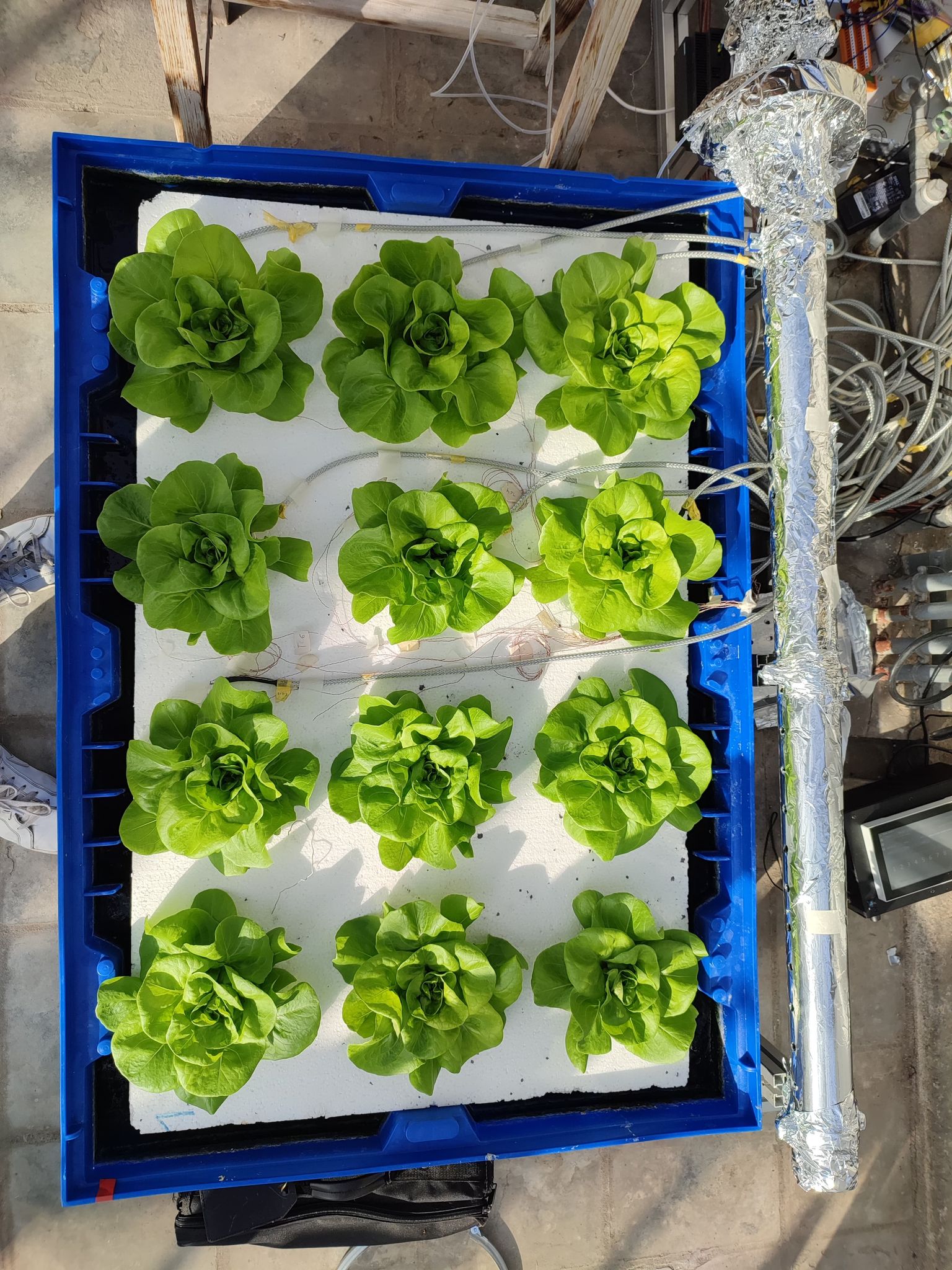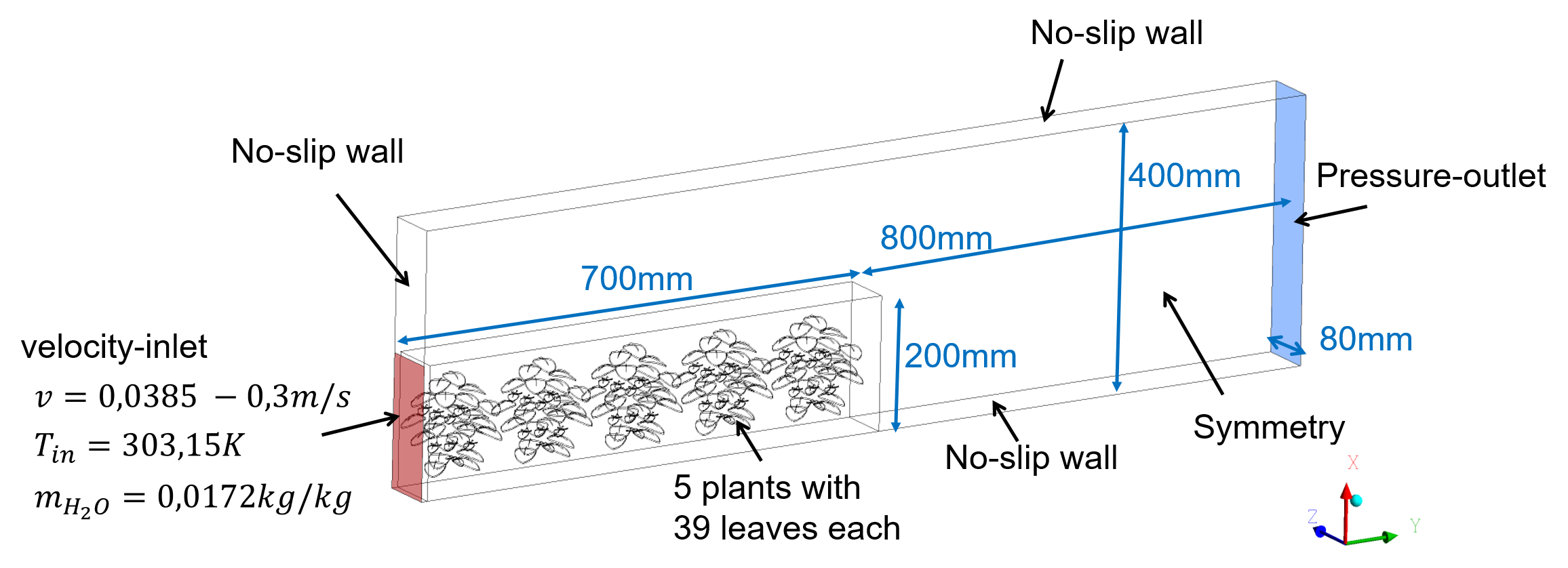Probleemstelling:
In order to keep the supply of food steady for the generations to come, researchers are looking at different ways to grow crops. One way of doing this, is by growing food in a multi-layered growing platform, called vertical farms or plant factories. As these vertical farms grow food in a confined way, accurate control of the climate around the plants is essential. In order to better understand how a plant interacts with its local climate, Computational Fluid Dynamics (CFD) can be used to simulate plant behavior inside a virtual growing zone. The more accurate the plant is modelled, the better airflows around the plants can be tuned. In order to validate this, an experimental set-up has been constructed in a greenhouse at the Coupure.

